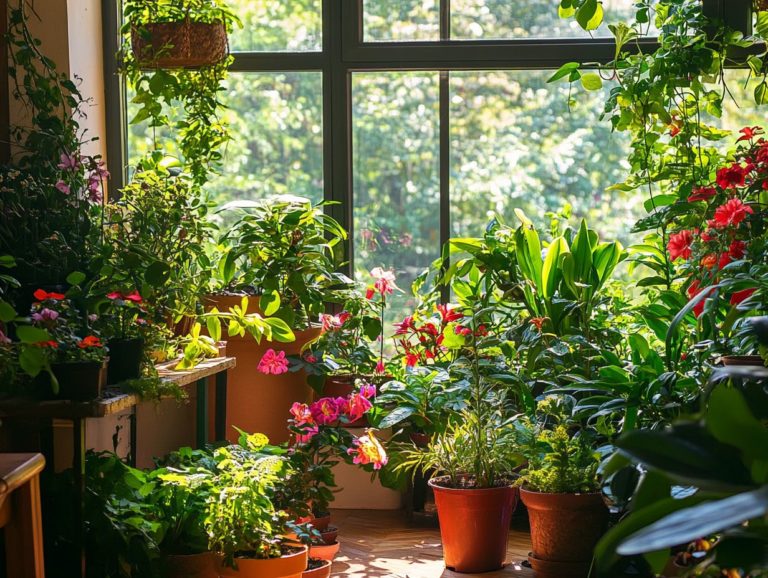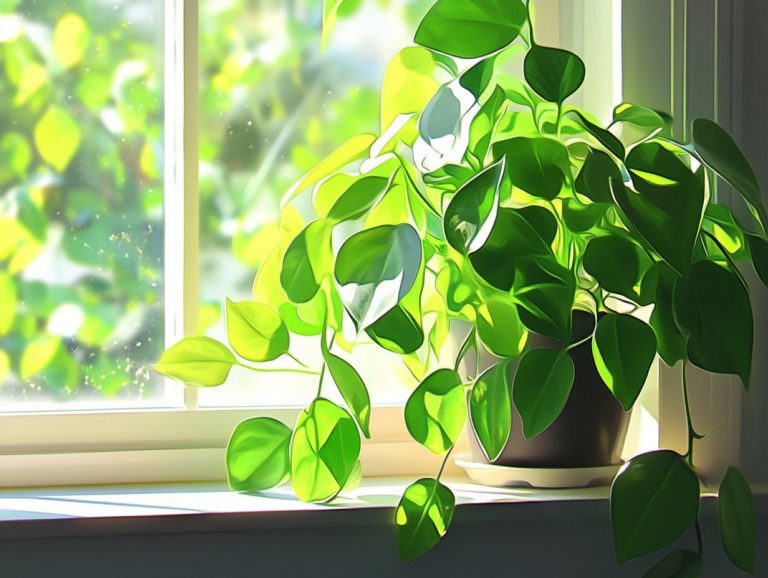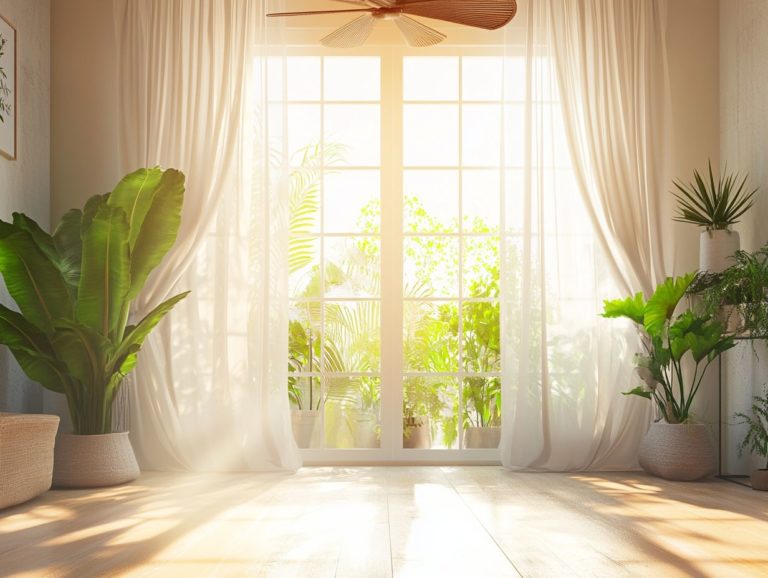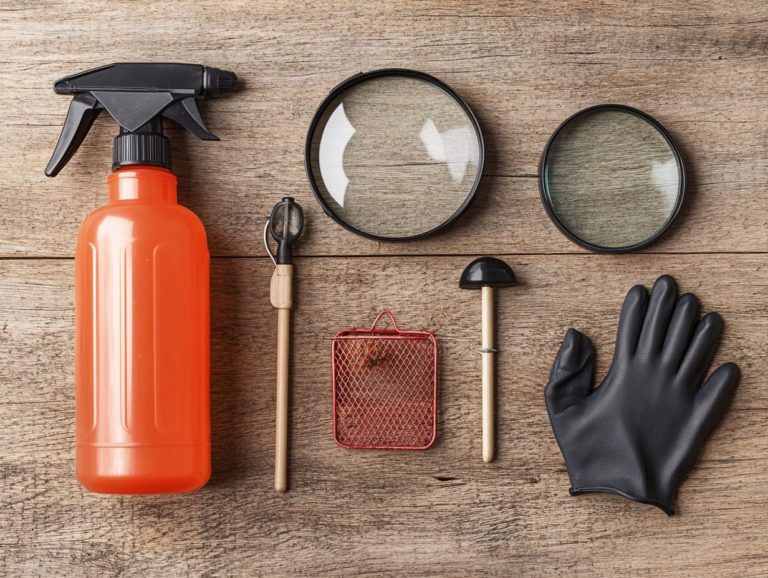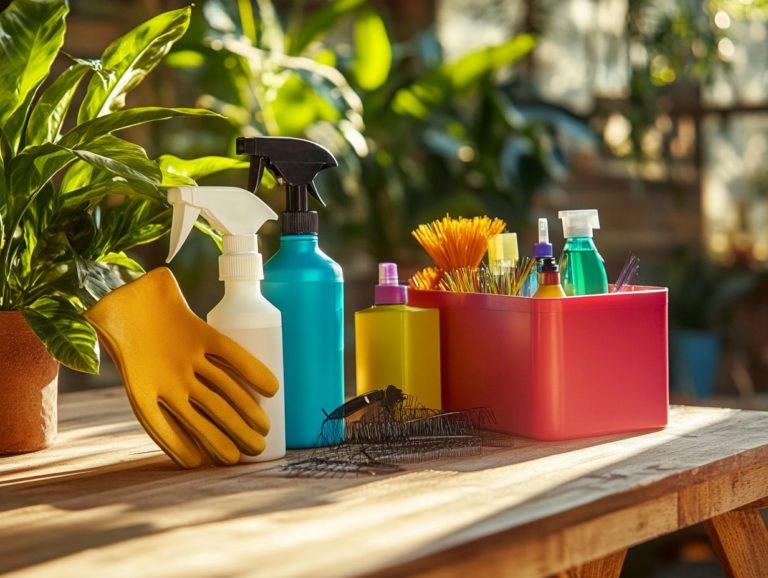How to Create a Pest-Free Indoor Garden
Creating a thriving indoor garden can be rewarding, but it often comes with challenges, especially unwanted pests.
From aphids to spider mites, understanding common indoor garden pests is essential for maintaining a healthy space. This guide will help you identify and prevent these nuisances, offering natural treatment options and tips for selecting pest-resistant plants.
With the right strategies, you can cultivate a vibrant, pest-free environment that thrives year-round. Immerse yourself in pest management essentials and transform your indoor garden into a sanctuary of growth and beauty.
- Key Takeaways:
- Understanding Common Indoor Pests
- Creating a Pest-Free Environment
- Choosing Pest-Resistant Plants
- Top Strategies to Keep Your Indoor Garden Pest-Free!
- Dealing with Pests in Indoor Gardens
- Frequently Asked Questions
- What makes an indoor garden truly pest-free?
- Why is it important to create a pest-free indoor garden?
- How can I prevent pests from entering my indoor garden?
- What are some natural repellents that can help keep pests away from my indoor garden?
- What should I do if I notice pests in my indoor garden?
- Are there any additional measures I can take to ensure my indoor garden remains pest-free?
- Identify and prevent common pests in your indoor garden. Regularly inspect plants for signs of infestation and take preventative measures.
- Create a pest-free environment by properly placing and maintaining your plants. Use natural methods like essential oils and diatomaceous earth, a natural pest control made from tiny fossilized remains, to manage pests.
- Choose pest-resistant plants, such as lavender and marigold, to help repel pests. Keep your garden clean and clutter-free to discourage pests from entering.
Contents
Key Takeaways:
Understanding Common Indoor Pests
Indoor gardening brings joy and beauty, but it also has its challenges, particularly with pesky intruders. You may encounter common indoor pests like aphids, spider mites, mealybugs, scale, whitefly, and fungus gnats.
These pests can damage your plants and lead to problems like black mold and sticky residue. It’s crucial to address these issues quickly to maintain plant health. Understanding these pests is key to nurturing a thriving indoor garden; their presence threatens your plants and can hinder your gardening ambitions. To effectively manage these challenges, check out this guide on how to keep your indoor plants pest-free.
Identifying and Preventing Common Pests
Identifying and preventing pests is crucial for maintaining plant health and stopping potential problems early. Regularly inspect new plants, quarantine infested plants, and use effective prevention methods to reduce the chances of pests like aphids, spider mites, and whitefly invading your indoor oasis.
Look for sticky residues or discoloration on leaves; these signs can indicate trouble before it escalates. Your inspection routine should include a thorough examination of the undersides of leaves and soil conditions, as these areas are prime spots for pest activity.
Incorporate preventative measures like introducing beneficial insects that help control pest populations, maintaining proper humidity levels, and ensuring good air circulation to strengthen your garden’s defenses. Additionally, learning how to identify common indoor plant pests can further aid in protecting your plants. By adopting a proactive mindset, you can foster a thriving environment and effectively protect your plants from intruders.
Creating a Pest-Free Environment
Creating a pest-free environment is your ticket to indoor gardening success. Focus on ensuring proper air circulation, regularly cleaning your gardening equipment, and implementing strong prevention methods.
These steps work together to create a sanctuary for your indoor plants, protecting them from unwelcome intruders. Start your pest management journey today and enjoy the beauty of a healthy indoor garden!
Proper Plant Placement and Maintenance
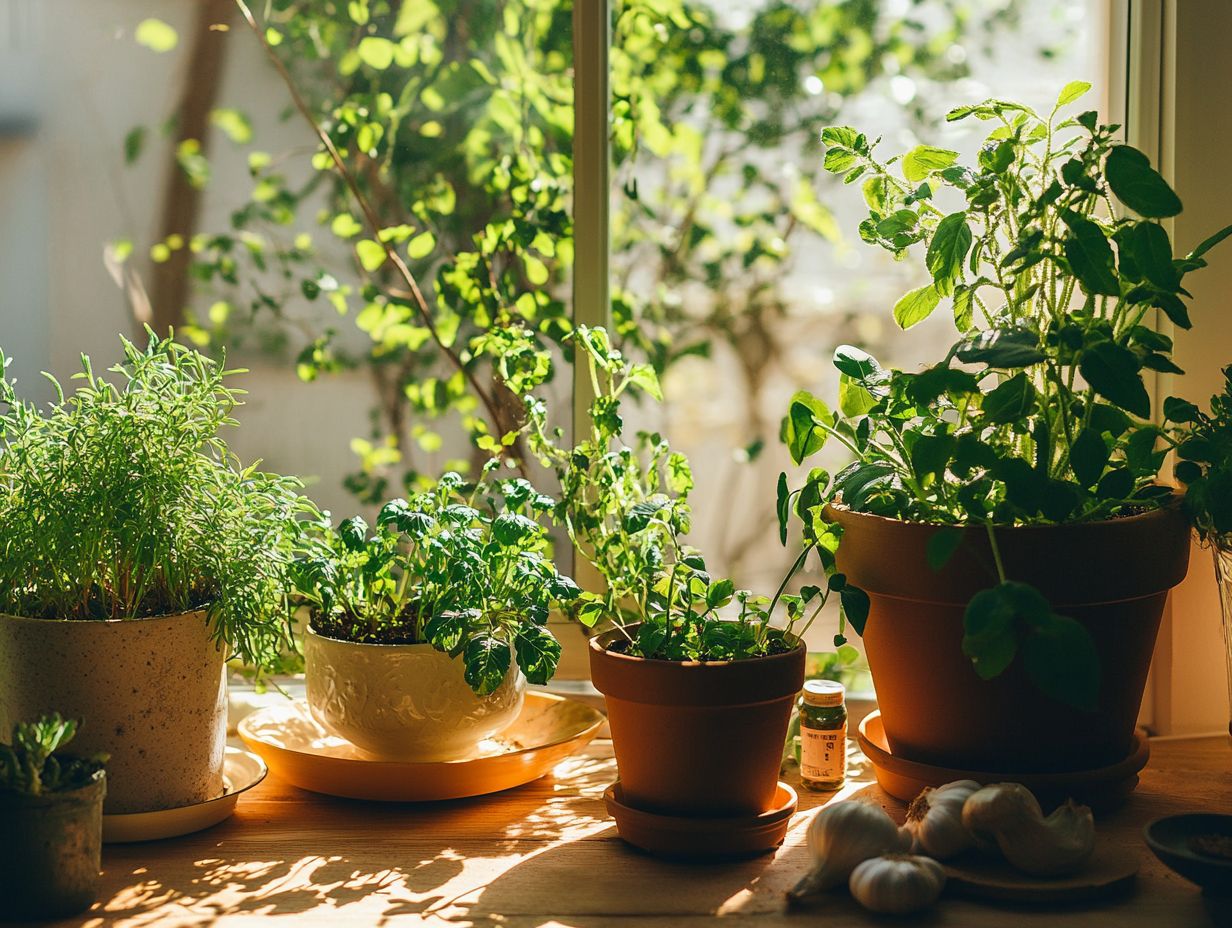
Proper plant placement and maintenance are vital in your indoor gardening journey. They help you minimize pest problems while creating the ideal growing environment. By strategically positioning resilient plants such as snake plants, jade, and even carnivorous varieties, you can significantly enhance air circulation and optimize light exposure. This leads to a healthier indoor garden.
To further elevate this environment, consider grouping plants that thrive under similar conditions. You can simplify your watering and care routines while creating a healthy environment. Incorporating companion plants can act as a natural pest deterrent; for instance, certain herbs and carnivorous plants repel unwanted insects.
Don t wait! Check your plants regularly to catch pests early. Inspect them for signs of distress or infestation. Early action can prevent small issues from becoming big problems. Understanding the characteristics of different plant types will help you cultivate a flourishing indoor space and play a significant role in effective and sustainable pest management.
Effective Natural Pest Control Methods
Effective natural pest control methods, including neem oil and garlic spray, will make your indoor gardening easier and healthier. Consider using options like:
- Neem oil
- Garden Safe insecticidal soap
- Garlic spray
- Beneficial bugs
These methods not only manage pest populations but also help keep your indoor plants healthy and thriving. Neem oil, a potent organic extract from the seeds of the neem tree, can be easily mixed with water and a dash of dish soap to create a spray that targets persistent aphids, spider mites, and whiteflies.
If you’re inclined to try garlic spray, simply blend garlic cloves with water and strain the mixture. This powerful garlic spray not only keeps pests away but also fights fungus!
Insecticidal soap is another fantastic option. You can purchase it or whip it up at home by mixing pure soap with water. This quick-acting solution works wonders on soft-bodied insects like mealybugs and thrips.
Finally, don’t underestimate the power of introducing beneficial bugs such as ladybugs or lacewings to help with pest problems. They help maintain a balanced ecosystem in your indoor garden, naturally keeping harmful pests at bay while protecting your delicate flora. For optimal care, it’s also important to know how to water your indoor garden correctly.
Choosing Pest-Resistant Plants
Opting for pest-resistant plants is a savvy strategy in indoor gardening. It can substantially reduce the likelihood of infestations from typical garden pests like mealybugs and whitefly. By selecting hardy varieties like snake plants, jade, and various herbs for your indoor herb garden, you ll create a thriving garden that resists pests.
Types of Plants that Repel Pests
Certain types of plants can work wonders in repelling pests in your indoor garden, elevating the health of your herb collection. By including aromatic herbs like basil, mint, and rosemary, you’re not just adding flavor to your culinary creations; you’re also inviting beneficial insects that help keep common pests at bay.
Beyond these popular herbs, consider adding lavender and marigold to your garden mix. Lavender brings a calming fragrance that’s delightful for you but tends to send many insects packing. Marigolds, with their vibrant blooms, are champions in defending against nematodes and aphids, making them invaluable allies in your gardening endeavors.
Incorporating these plants not only enhances the aesthetics of your indoor space but also fosters a holistic approach to gardening. This creates a thriving ecosystem that stays free from harmful pests, especially with preventing pest infestations in indoor plants.
Top Strategies to Keep Your Indoor Garden Pest-Free!
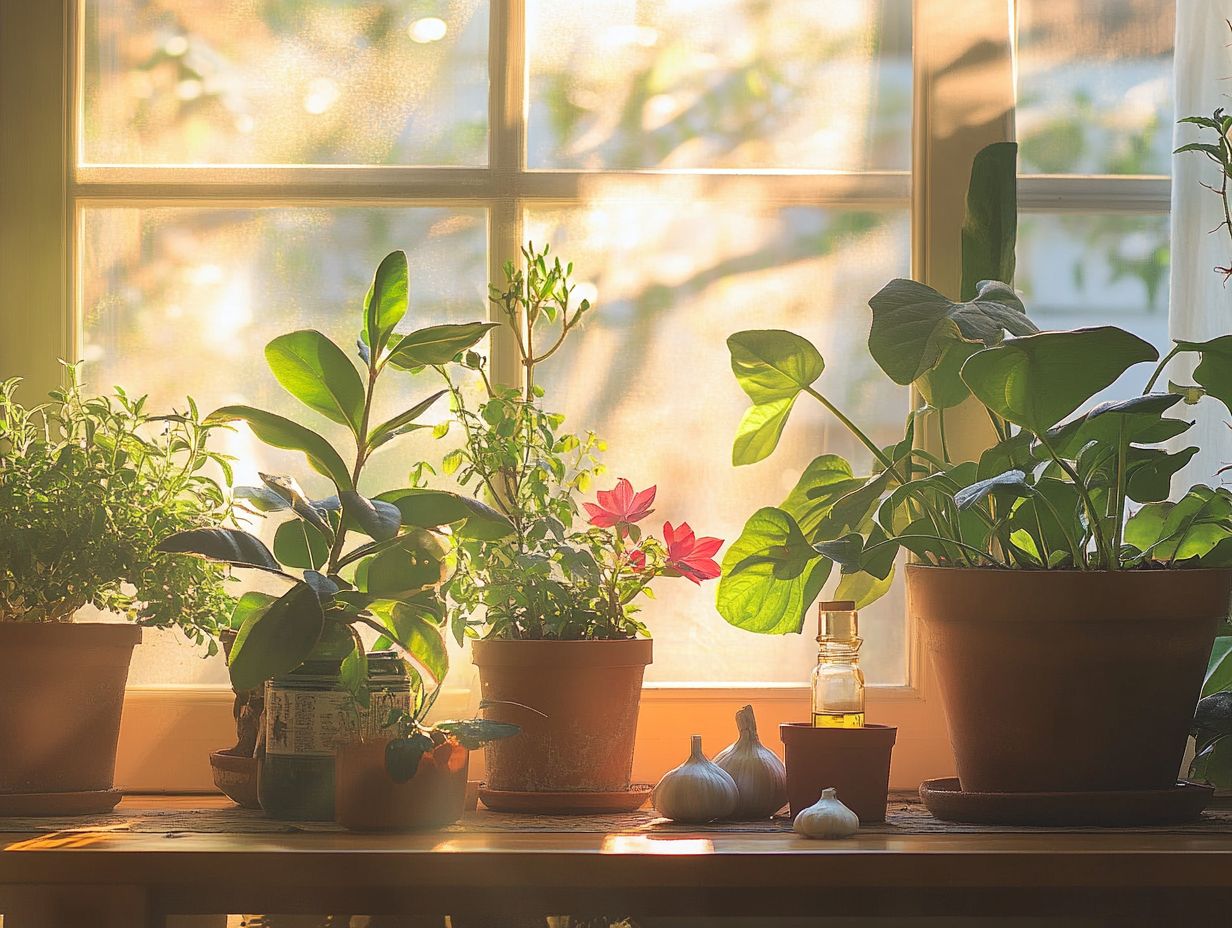
Implementing preventive measures for your indoor garden is essential in thwarting pest problems before they take root. Start by inspecting new plants carefully. Develop routines for inspecting new plants, quarantining any infested specimens, and cleaning your gardening tools to cultivate a proactive approach.
This strategy significantly reduces the risk of infestation and helps ensure your plants thrive in a healthy environment. For more insights, consider understanding indoor plant pest resistance.
Tips for Keeping Pests Out
Keeping pests at bay in your indoor garden demands your consistent effort and a savvy blend of effective prevention methods. Simple practices, such as maintaining clean gardening tools and ensuring optimal air circulation, can significantly diminish the chances of pest issues. Your plants will love you for it!
Regular monitoring of your plants is crucial. Keep an eye out for any signs of infestations, like discolored leaves or unsightly webbing.
Planting certain plants together can help keep pests away. Embrace companion planting as a natural deterrent against common pests.
For pest control, consider utilizing organic insecticidal soaps or neem oil. These options keep harmful insects at bay and ensure your indoor space remains safe and serene.
Maintain proper humidity and follow appropriate watering schedules to prevent mold and fungal growth that can attract unwelcome visitors.
By integrating these thoughtful strategies, you can confidently safeguard your indoor sanctuary against pesky intruders.
Dealing with Pests in Indoor Gardens
Managing pests in your indoor garden is a challenge many gardeners face. Understanding your treatment options can transform this daunting task into a more manageable one.
Whether you lean toward natural remedies like neem oil or decide to use chemical treatments, adopting a well-informed strategy will enable you to curb pest populations effectively and safeguard the health of your plants.
Safe and Effective Pest Removal Methods
Implementing safe and effective pest removal methods is essential for maintaining a thriving indoor gardening environment, especially when faced with infestations.
Techniques like using insecticidal soap, introducing beneficial insects, and applying targeted treatments can manage pest populations without jeopardizing the health of your plants.
Incorporating options like neem oil and diatomaceous earth adds extra layers of protection while remaining environmentally conscious. Consider the specific type of pest invading your space, as targeted strategies often yield the best results.
For example, beneficial nematodes can efficiently combat soil-dwelling pests, while traps are excellent for monitoring and reducing populations of flying insects.
By combining these various approaches, you can develop a comprehensive pest management plan that ensures the vitality of your plants and promotes sustainability.
Check out this video for expert tips on pest control in indoor gardens!
Frequently Asked Questions
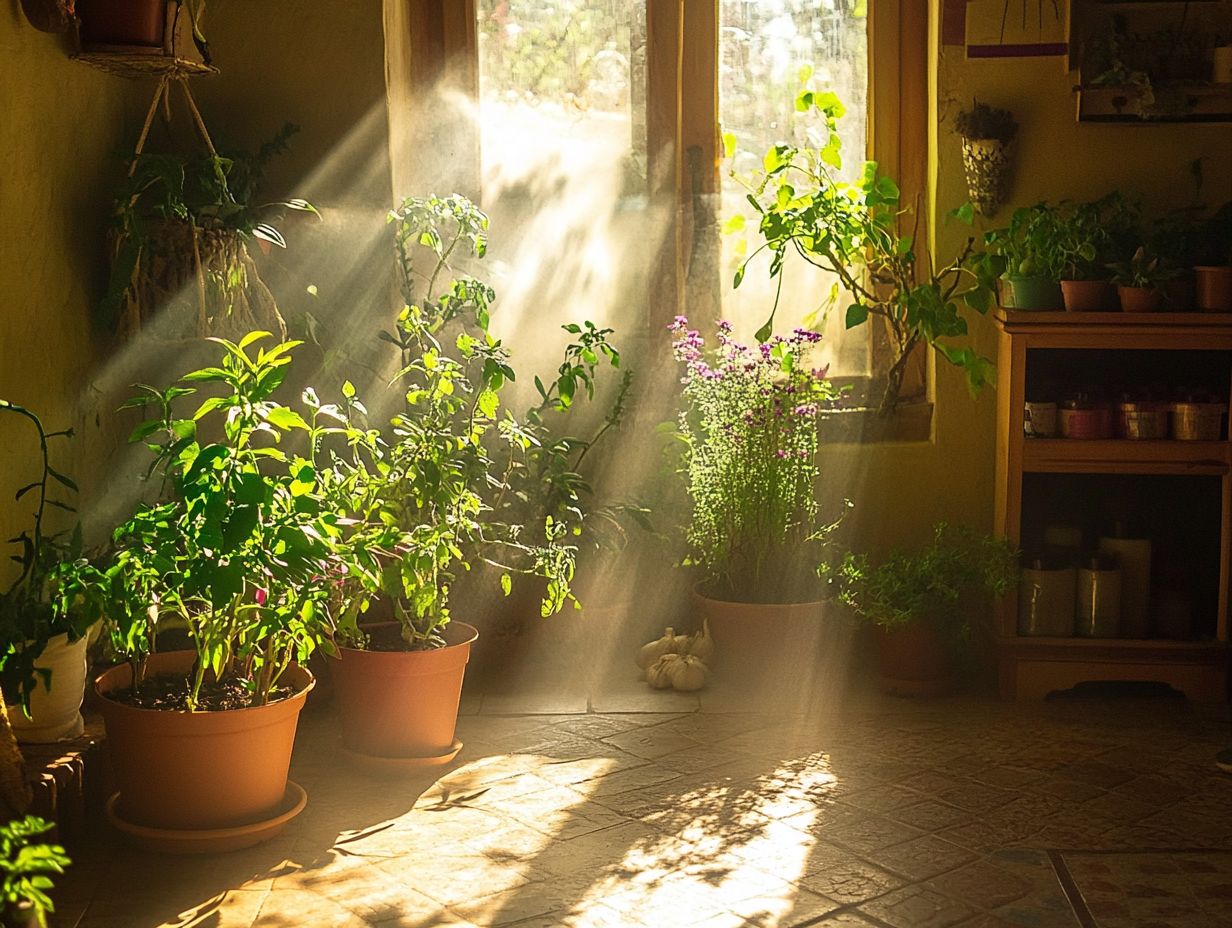
What makes an indoor garden truly pest-free?
A pest-free indoor garden is one that is free from any unwanted insects, rodents, or other pests that can harm or damage your plants.
Why is it important to create a pest-free indoor garden?
Creating a pest-free indoor garden is vital to ensure the health and growth of your plants. Pests can damage or even kill your plants, leading to a failed garden.
How can I prevent pests from entering my indoor garden?
There are several ways to prevent pests from entering your indoor garden. Use natural repellents, keep your garden clean and clutter-free, and regularly inspect your plants for any signs of pests.
Start applying these tips today and watch your indoor garden flourish!
What are some natural repellents that can help keep pests away from my indoor garden?
Natural repellents can help protect your indoor garden. Essential oils, garlic, neem oil, and diatomaceous earth are effective options.
Apply them to your plants or use them as barriers.
Diatomaceous earth is a natural powder made from tiny fossilized aquatic organisms. It helps control pests by damaging their exoskeleton.
What should I do if I notice pests in my indoor garden?
Act quickly if you see pests in your indoor garden. Use natural pest control methods or call a professional for severe infestations.
Are there any additional measures I can take to ensure my indoor garden remains pest-free?
Yes, keep your garden pest-free by using natural repellents and inspecting your plants regularly. Maintain hygiene by removing dead plant matter and cleaning your tools frequently.

